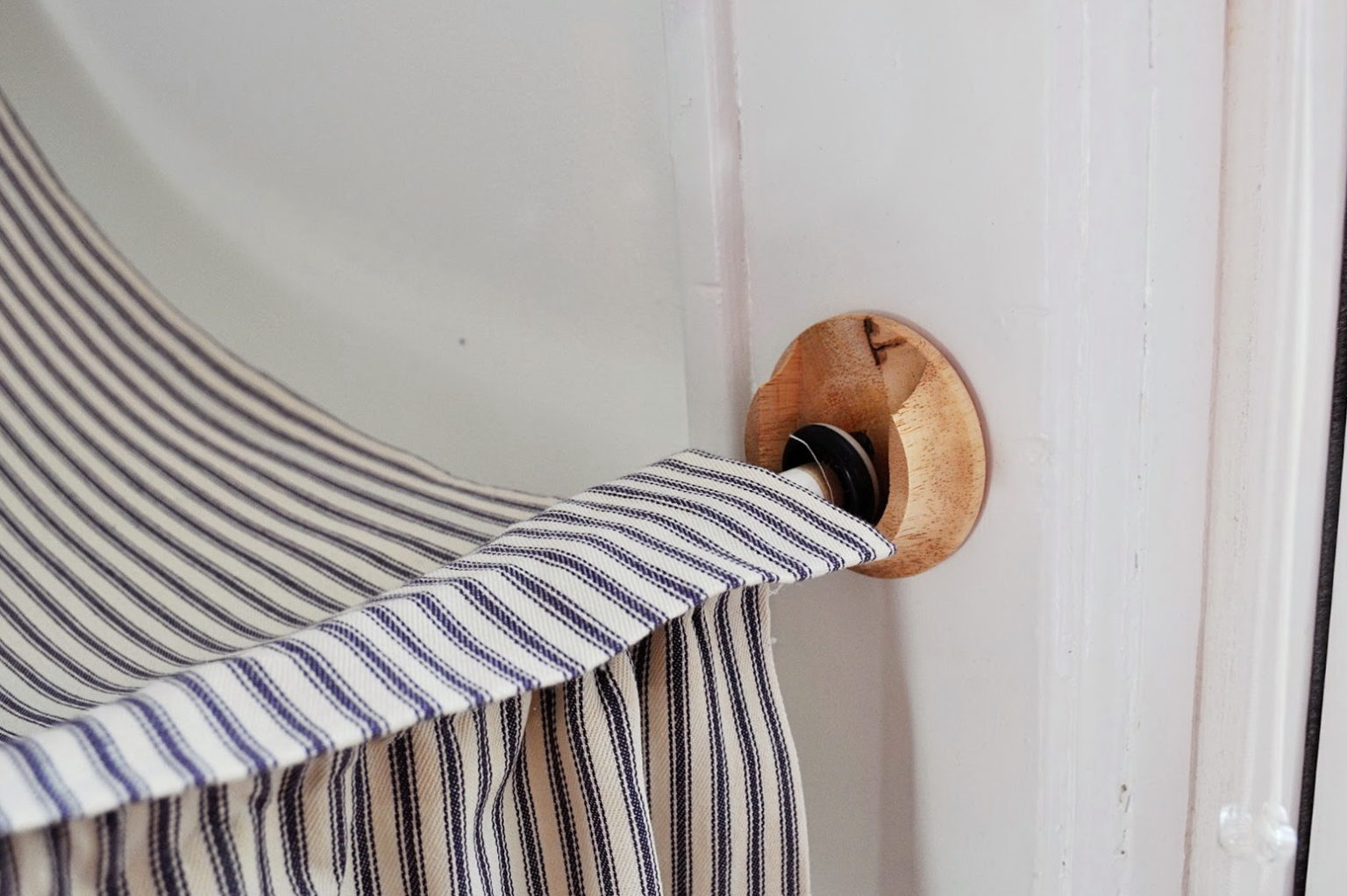Do you find yourself wrestling with a stubborn tension rod that refuses to stay in place, leaving your curtains askew and your patience threadbare? Fret no more! In this comprehensive guide, we embark on a journey to tackle this household quandary head-on, arming you with an arsenal of effective solutions to restore harmony in your home.

Image: interior.tn
Understanding Tension Rods and Their Quirks
Tension rods, as their name suggests, rely on the principle of tension to anchor themselves between two surfaces, typically walls or frames. These versatile fixtures are often used to support curtains, blinds, or shower curtains, offering a convenient and non-permanent way to enhance your living spaces. However, their reliance on tension can also lead to instances of slippage and instability.
Identifying the Cause: A Diagnostic Approach
Before embarking on the repair process, it’s crucial to identify the culprit behind your tension rod’s misbehavior. Here are some common factors to consider:
- Insufficient tension: If the rod is not tightened enough, it will lack the necessary grip to stay in place.
- Uneven surfaces: Walls or frames that are uneven or textured can create pockets of air, preventing the rod from establishing a secure contact.
- Slippery surfaces: Materials like glass or glossy paint can make it challenging for the rod to maintain its grip.
- Age and wear: Over time, tension rods can become weakened or bent, affecting their performance.
Solutions for Every Tension Rod Dilemma
Now that we have a better understanding of the underlying causes, let’s delve into the solutions to fix your tension rod and restore order to your home:

Image: www.pinterest.com
Tightening the Tension
This is the simplest and most common fix for a loose tension rod. Simply locate the adjuster, usually a screw or knob, and use a screwdriver or your hands to tighten it further. Ensure that the rod is secure without causing any damage.
Creating a Secure Contact
If uneven surfaces are the culprit, you can create a better contact surface using adhesive pads or anti-slip tape. These materials provide extra grip, preventing the rod from sliding down.
Tackling Slippery Surfaces
For slippery surfaces, a solution like rubber bands or friction tape can work wonders. Wrapping these materials around the ends of the rod increases its frictional coefficient, enhancing its grip on the surface.
Replacing Worn or Bent Rods
In cases where the rod has become worn or bent, a new rod may be necessary. Choose a rod that is the correct size and material for your application, and install it securely following the manufacturer’s instructions.
Additional Tips for Tension Rod Stability
To further enhance the stability of your tension rod, consider these additional tips:
- Curtain weight: Avoid hanging excessively heavy curtains or drapes on your tension rod, as this can put undue stress on the rod and cause it to slip.
- Proper installation: Ensure that the rod is level and aligned correctly before tightening it.
- Support brackets: For heavier curtains or if you are concerned about stability, you can install support brackets to provide additional support to the rod.
How To Fix A Tension Rod
Conclusion
Fixing a tension rod is a simple yet effective way to restore harmony and functionality to your home. By understanding the common causes of instability and implementing the solutions outlined in this guide, you can confidently tackle any tension rod woes that arise, leaving your curtains and home décor looking and feeling their best.
If you encounter persistent problems with your tension rod, it may be advisable to seek the assistance of a qualified handyman or contractor to ensure proper installation and optimal performance.